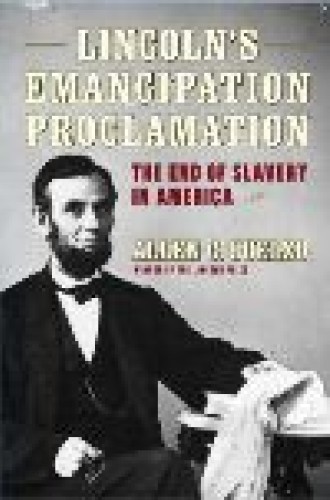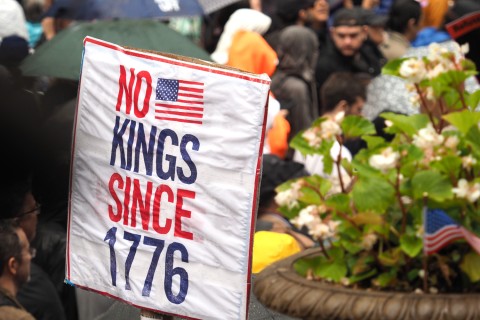Lincoln's Emancipation Proclamation
Allen Guelzo’s book leads us into contested territory. For more than a generation after the Civil War, Francis B. Carpenter’s painting “The Emancipation Proclamation,” portraying Lincoln as the great emancipator, occupied an honored place in many American—including African American—homes. The terrain began to shift during the 1960s civil rights era, as questions and criticisms emerged about Lincoln and slavery. In the early 1990s the Ken Burns documentary The Civil War increased interest in the war among new audiences, but included the assertion by historian Barbara Fields that the slaves freed themselves—with little credit given to Lincoln. In 2000 Lerone Bennett, former editor of Ebony magazine, charged, in Forced Into Glory: Abraham Lincoln’s White Dream, that Lincoln was a racist who, in the Emancipation Proclamation, acted only from cynical military expediency. In recent years Lincoln also has had his critics on the right, who have trained their guns on him as the founder of modern big government led by imperial presidents who act precipitously in initiatives like the Emancipation Proclamation and the Patriot Act.
Guelzo is a guide who can be trusted to navigate fairly a whole series of questions and issues. He won the Lincoln Prize in 1999 for his book Abraham Lincoln: Redeemer President. For many years a professor of American history at Eastern University, he recently accepted a position at Gettysburg College. He acknowledges that the Emancipation Proclamation is often remembered today for what it did not do. It did not ascend to the grandeur of Lincoln’s rhetoric in the Gettysburg Address or Second Inaugural Address. That was not its function. It did not free all the slaves. That was not its purpose. It was an emergency measure crafted by a lawyer commander-in-chief as a wartime edict.
Although Guelzo focuses on this single document, signed by Lincoln on January 1, 1863, he treats us to a story on many levels: constitutional, political, military, moral and religious. We are reminded throughout of Lincoln’s longstanding antislavery position. Guelzo makes the case that Lincoln was our last Enlightenment politician. His journey to the Emancipation Proclamation demonstrates his commitment to the Enlightenment’s most important political virtue: prudence. Lincoln was more keenly aware than his opponents and friends of the complexity of the issues and options he faced as president. In Redeemer President Guelzo presented a Lincoln of intellectual curiosity and ideas; in this book he presents the same thoughtful president as a shrewd politician. Though Lincoln appeared to many contemporaries to be cautious, and though members of his own party criticized him for not leading, Guelzo emphasizes that Lincoln was following his own path to emancipation.
For Lincoln, the Enlightenment and religion were not opposites, as they sometimes seem today. As Lincoln journeyed toward the Emancipation Proclamation, his faith was deepened by his own regular immersion in the Bible and his attendance at the New York Avenue Presbyterian Church, where he heard the preaching of Phineas Densmore Gurley. If Lincoln was a fatalist as a younger man, he became a president deeply influenced by the Presbyterian ideas of divine providence, which would come into full view in his Second Inaugural Address.
Guelzo declares, “Lincoln’s Proclamation was one of the biggest political gambles in American history.” In this one act Lincoln changed the purpose of the war from a struggle for the preservation of the Union to a fight to overthrow slavery. This book, and the story it tells with great erudition, deserve a wide reading. William S. Seward, secretary of state and Lincoln’s rival for the Republican nomination in 1860, understood what Lincoln had accomplished. He told artist Carpenter, “Slavery was killed several years ago. Its death knell was tolled when Abraham Lincoln was elected President.”






